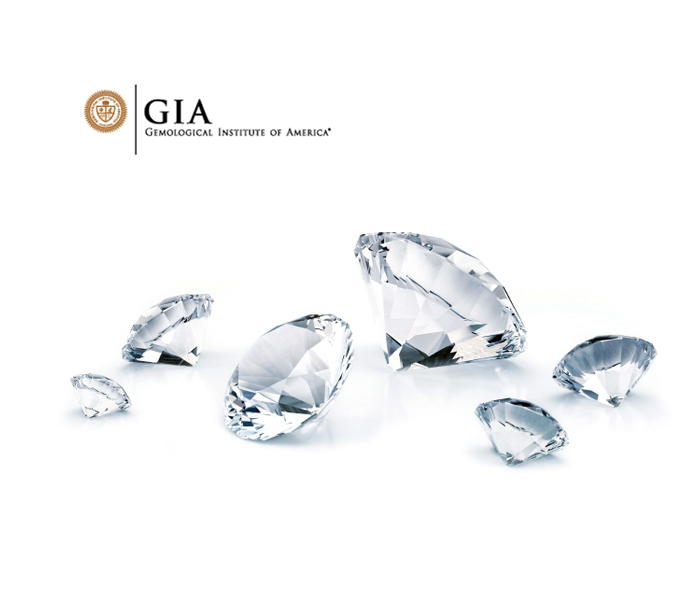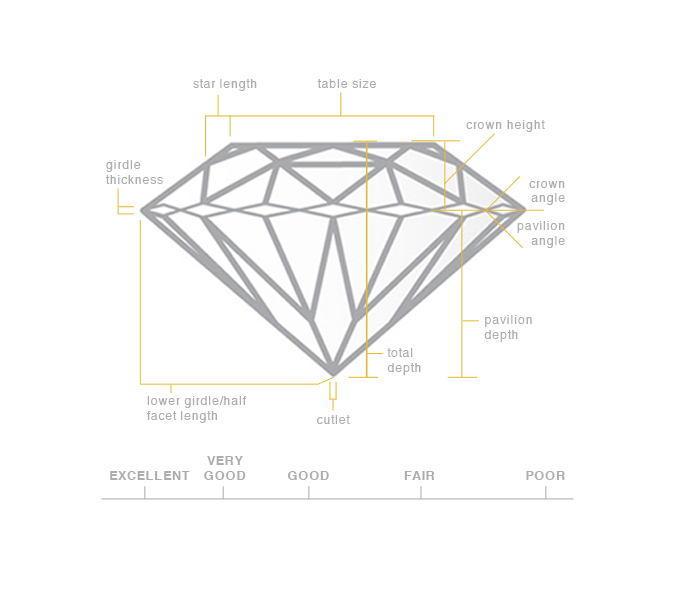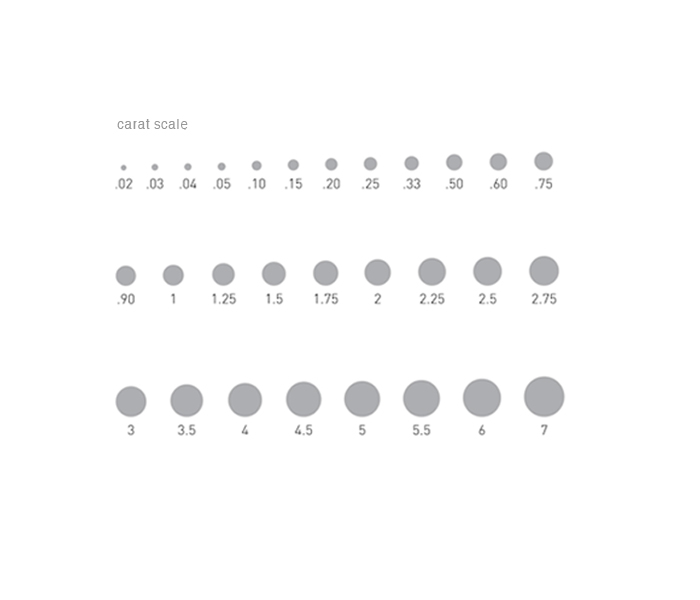 GIA is the largest, most-respected nonprofit source of gemological knowledge in the world.
GIA is the largest, most-respected nonprofit source of gemological knowledge in the world.
GIA exists to connect people to the understanding of gems. As a long-standing scientific authority, the GIA is not only a unique source for diamond knowledge, but its grading reports inspire confidence wherever they appear.
GIA • Gemological Institue of America
GIA’s commitment to protecting diamond buyers inspired the Institute to create the 4Cs and the International Diamond Grading System™. These methods are the universal benchmarks by which all diamonds receive grading. As the birthplace of these standards, and with its investment in continued gemological research, GIA’s authority is unequaled.
The world’s most respected retailers, museums, auction houses, and private collectors rely on the expertise of GIA graders to assess, grade and verify their gems. They recognize the importance of complete, unbiased, scientific information in gem assessment, and entirely trust GIA to provide it.
The Four “Cs”
Every diamond is a miracle of time and place and chance. Like snowflakes, no two are exactly alike.
Until the middle of the twentieth century, there was no agreed-upon standard by which diamonds could be graded. GIA created the first, and now globally accepted standard for describing diamonds: Color, Clarity, Cut, and Carat Weight. Today, the 4Cs of Diamond Quality is the universal method for assessing the quality of any diamond, anywhere in the world.
The creation of the Diamond 4Cs meant two significant things: diamond quality could now be communicated in a universal language, and diamond customers could know the quality of what they were about to purchase.
The Cut of a Diamond
Diamonds are renowned for their ability to bounce and reflect light and sparkle so intensely. Precise artistry and workmanship are required to fashion a stone, so its proportions, symmetry, and polish deliver the magnificent return of light only possible in a diamond. Cut defines the relationship a diamond has with light through three attributes:
Brightness: Internal and external white light reflected from a diamond
Fire: The scattering of white light into all the colors of the rainbow
Scintillation: The amount of sparkle a diamond produces, and the pattern of light and dark areas caused by reflections within the diamond
Many more specific and technical characteristics go into making the perfect cut for a diamond, which can be found at the GIA website linked below.
The Color of a Diamond
The diamond color evaluation of most gem-quality diamonds is based on the absence of color. A chemically pure and structurally perfect diamond has no hue, like a drop of pure water, and consequently, a higher value. GIA’s D-to-Z diamond color-grading system measures the degree of colorlessness by comparing a stone under controlled lighting and precise viewing conditions to Masterstone stones of established color value.
GIA’s diamond D-to-Z color-grading scale is the industry’s most widely accepted grading system. The range begins with the letter D, representing colorless, and continues, with an increasing presence of color, to the letter Z.
Many of these color distinctions are so subtle that they are invisible to the untrained eye; however, these distinctions make a huge difference in diamond quality and price.
The Carat Weight of a Diamond
Diamond carat weight is the measurement of how much a diamond weighs. A metric “carat” is defined as 200 milligrams. Each carat is subdivided into 100 ‘points’ which allows precise measurements to the hundredth decimal place. A jeweler may describe the weight of a diamond below one carat by its ‘points’ alone and may refer to a diamond that weighs 0.25 carats as a ‘twenty-five pointer’; greater than one carat are carats and decimals – 1.08 carats.
All else being equal, a diamond’s price increases with diamond carat weight, because larger diamonds are rarer and more desirable. But two diamonds of equal carat weight can have very different values (and prices) depending on three other factors of the diamond 4Cs: Clarity, Color, and Cut.
It’s important to remember that a diamond’s value is determined using all of the 4Cs, not just carat weight.
The Clarity of a Diamond
Natural diamonds are the result of carbon exposed to tremendous heat and pressure deep in the earth which can result in creating ‘inclusions’ and ‘blemishes.’ While no diamond is perfectly pure, the closer it comes, the higher it’s value. The GIA Diamond Clarity Scale has six categories, some of which are divided, for a total of 11 specific grades.
Flawless (FL): No inclusions or blemishes visible under 10x magnification
Internally Flawless (IF): No inclusions visible under 10x magnification
Very, Very Slightly Included (VVS1 and VVS2): Inclusions so slight they are difficult for a skilled grader to see under 10x magnification
Very Slightly Included (VS1 and VS2): Inclusions are observed with effort under 10x magnification, but can be characterized as minor
Slightly Included (SI1 and SI2): Inclusions are noticeable under 10x magnification
Included (I1, I2, and I3): Inclusions are obvious under 10x magnification which may affect transparency and brilliance






